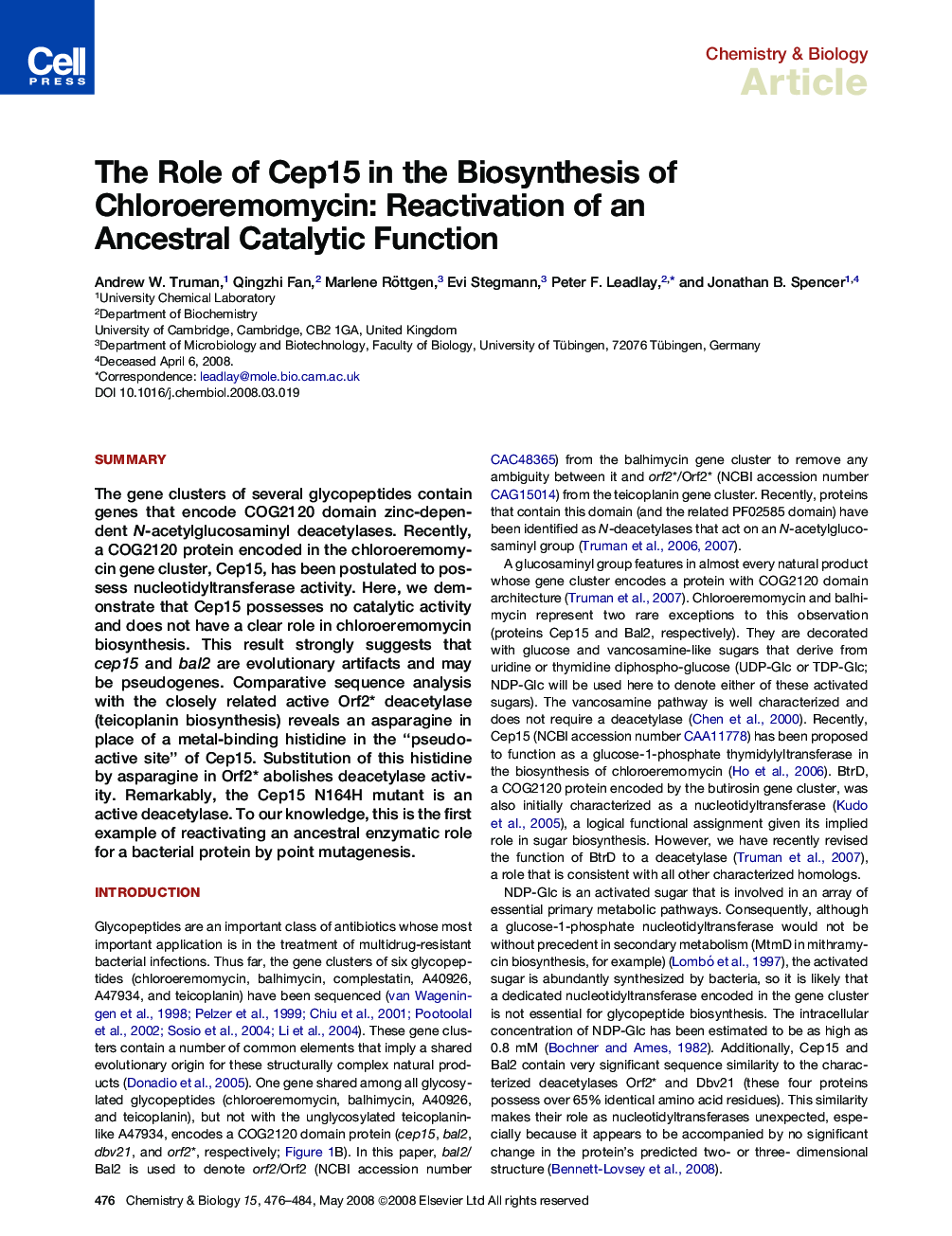| کد مقاله | کد نشریه | سال انتشار | مقاله انگلیسی | نسخه تمام متن |
|---|---|---|---|---|
| 1392772 | 983770 | 2008 | 9 صفحه PDF | دانلود رایگان |

SummaryThe gene clusters of several glycopeptides contain genes that encode COG2120 domain zinc-dependent N-acetylglucosaminyl deacetylases. Recently, a COG2120 protein encoded in the chloroeremomycin gene cluster, Cep15, has been postulated to possess nucleotidyltransferase activity. Here, we demonstrate that Cep15 possesses no catalytic activity and does not have a clear role in chloroeremomycin biosynthesis. This result strongly suggests that cep15 and bal2 are evolutionary artifacts and may be pseudogenes. Comparative sequence analysis with the closely related active Orf2∗ deacetylase (teicoplanin biosynthesis) reveals an asparagine in place of a metal-binding histidine in the “pseudo-active site” of Cep15. Substitution of this histidine by asparagine in Orf2∗ abolishes deacetylase activity. Remarkably, the Cep15 N164H mutant is an active deacetylase. To our knowledge, this is the first example of reactivating an ancestral enzymatic role for a bacterial protein by point mutagenesis.
Journal: - Volume 15, Issue 5, 19 May 2008, Pages 476–484